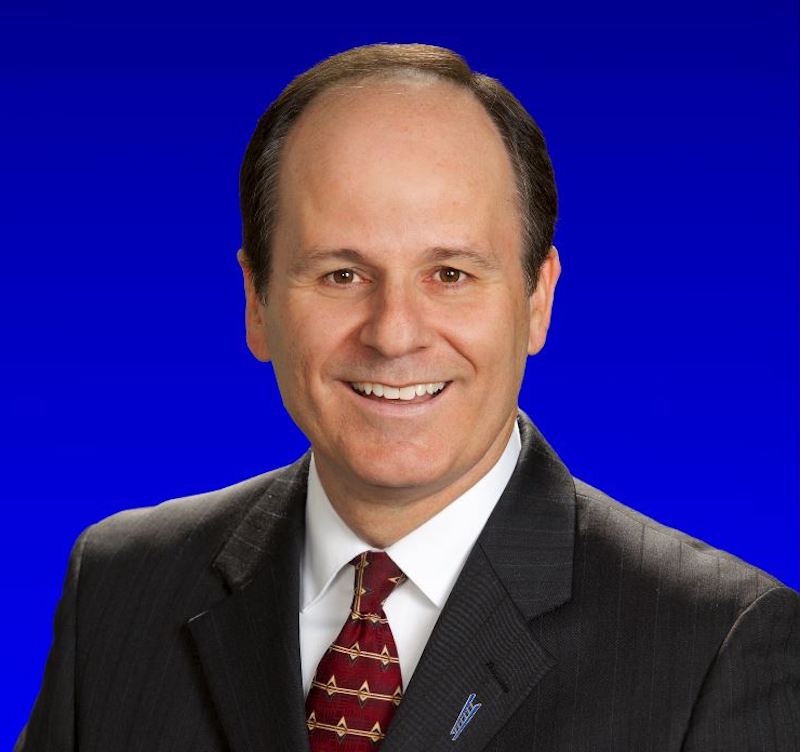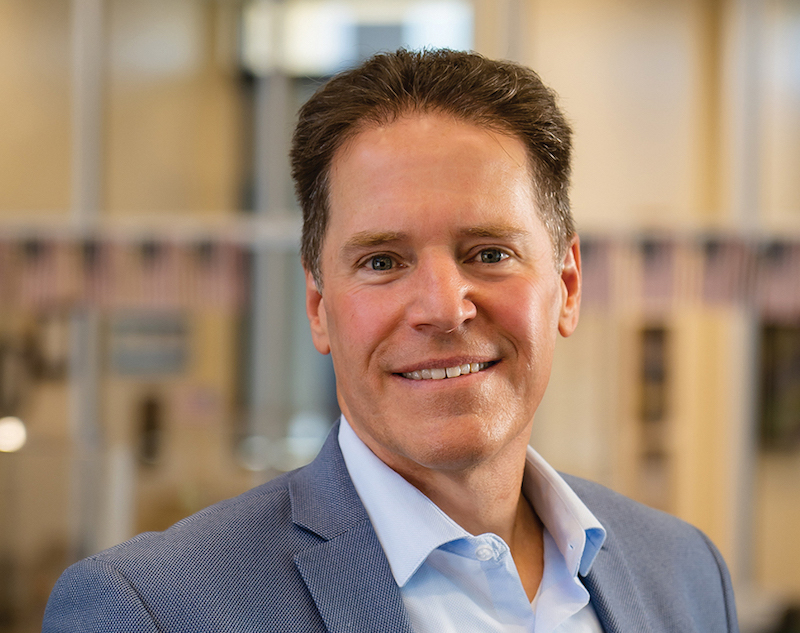A year ago, community banks in Northern Nevada were working around the clock — answering phones, hopping on Zoom calls, replying to emails — as their clients scrambled to access the Paycheck Protection Program loans amid the economic downturn of the coronavirus pandemic.
“Because this was new and our clients didn’t understand it, we were working 24/7 through round one of PPP,” said Paul Stowell, Nevada regional executive at City National Bank. “There were colleagues that were meeting with clients at 2 a.m. via Zoom to go through their applications. They needed help, and we were there for them.”
While workdays are no longer regularly stretching past midnight, local banks are still on the front lines of helping the region’s small businesses access the capital they need to stay afloat as the Reno-Sparks economy recovers.
All the while, financial institutions are navigating their own set of challenges throughout the rest of 2021. From low interest rates impacting profitability to the surge of deposits putting balance sheets off-kilter, Northern Nevada banks are not simply swimming in money like Scrooge McDuck. Like their small business clients, they have also scrambled, pivoted and adapted on the fly since COVID hit.
The NNBW spoke recently with five executives to discuss lessons the industry has learned during the pandemic, what trends and services have been altered, and what challenges and opportunities lie ahead.
 Paul Stowell
Paul Stowell
Question: What valuable lessons has City National learned during the pandemic?
Answer: Well, I think all companies have learned how to pivot. None of us were prepared for this. We all have disaster-recovery plans, we all have crisis business plans, and we prepare and we do drills and we plan, but I think with this (pandemic), we learned to pivot. And I’m very proud of what City National did and how we pivoted and how we kept our doors open and continued to take care of our clients’ financial needs. But we also, first and foremost, were concerned about the safety of not only our clients, but also our colleagues, and how we can continue to help our community.
And so, we kept the doors open and we actually were very successful through the pandemic, and hopefully we’re pretty close to being on the other side. Heaven forbid that there’s another pandemic like this, but a lesson learned, I think, is that we’ll be more prepared for something like this in the future.
Q: Specifically, what did working with businesses that were challenged during the pandemic teach City National?
A: We like to pride ourselves on being a trusted financial advisor to our clients. And of course what we learned through ’08 and ’09, we stayed in front of our clients. We didn’t bury our head in the sand. We stayed in front of them and we stepped up our interaction. I think a lot of people have reached Zoom fatigue. But what’s nice about the Zoom capabilities and Microsoft Teams and that type of technology, it allowed us to stay in front of our clients on a regular basis, and really increase the frequency of staying in front of our clients, and allowing them to interact with us, and keeping everybody safe. And we had probably more meetings and more events than we’ve ever had through this type of technology.
The PPP and some of the other government stimulus programs, along with things that we were doing with our clients — loan modifications, delaying payments, things like that — we did everything through handholding. Because this was new and our clients didn’t understand it and we were working 24/7 through round one of PPP. There were colleagues that were meeting with clients at 2 a.m. via Zoom to go through their applications. They needed help, and we were there for them, and they appreciated it. I think our clients are even more loyal than they have been previously because of the handholding and white-glove service that we provided.
Q: What trends and bank services did the pandemic speed up and what did it perhaps slow down?
A: As I said, the digital capabilities, that’s sped up everything. The speed of products and services through the digital capabilities, we enhanced that and poured more money and more resources into those because, let’s face it, people weren’t comfortable going into a branch or going face-to-face. They wanted to stay safe; we wanted to keep them safe. And so we were able to do a whole lot more through the digital platforms that we have developed.
Q: What are the top challenges and opportunities facing the banking industry in 2021 and beyond?
A: I think, regulatory, we continue to look at that, and how we can navigate through the regulatory environment. We are very supportive of the regulatory environment, and trying to keep a balance between too little or too much. And I think if we can just stay down the middle and be able to navigate through … I know regulators and the government want to try to prevent what happened in ’08 and ’09, and I think they did a very good job through the government stimulus program. They did a very good job with PPP, which absolutely saved a lot of businesses in this country. And without that, I think a lot more would have gone under. We want to be very supportive of those regulations, but we don’t want to see them become so burdensome that it prevents us from helping our clients. So there’s a happy medium.
I think, certainly one of the challenges that we’ve said many times before is the labor force. And, really, a lot of people, a lot of kids today are not looking at banking as a career opportunity. And so, we’re going to see some challenges in our industry in getting qualified people to take over for those of us who will retire. Who’s coming up through the ranks? I’d like to see more emphasis, particularly in universities and high schools, on the finance side to try and get kids more interested in that. They think of a bank, they think of a teller. But there are a lot more opportunities in banking other than being a teller. You can get into accounting, you can get into IT, you can get into risk management, you can get into a lot of different areas of banking that are not traditionally finance-related.
But in terms of real opportunities down the road, I’m very bullish on what we see through this year and then the next year. The inflationary pressures right now are very transitory and they’re going to subside once the supply chain can catch up with the demand side of things. But I think that there are real opportunities in this country for growth and prosperity. At the end of the day, I think, through American ingenuity, businesses are very resilient. And I think we’re going to see the benefits and the fruits of our labors through this year and into next year. And I see a very positive economy coming forth from all of this.
 Andrew Ryback
Andrew Ryback
Q: What valuable lessons has Plumas Bank learned during the pandemic?
A: We had to be adaptable and responsive to our clients, and many of them were obviously extremely concerned during these shutdowns as to how much of an impact it was going to have on them. And then there was a mad rush for the economic stimulus, the PPP, and being there to answer the phone for them just meant so much. And we had a lot of phone calls to return — and we did.
Being able to be accessible to our clients, being able to be responsive to them in a very evolving environment was challenging. We were learning on the fly, and we had to be kind of the experts in helping our clients through that process. They appreciated it — our clients and our newly acquired clients as a result of this. Community banks, in general, did a very good job. And I think some of the larger institutions had a little tougher time being as responsive to their clients. It was a shining moment for us to be kind of the economic first responders through this crisis. I think that’s made a difference in a lot of our clients’ lives.
Q: Specifically, what did working with businesses that were challenged during the pandemic teach Plumas Bank?
A: Being able to listen to them and respond to them was of critical importance, and I think, again, we did a real good job of being there. They just want to know if their PPP application is in. And it was easy enough to give them a call and say, ‘we’re in the queue,’ or ‘we’re almost there.’ There was a banner day when the SBA opened up and they excluded all the big banks from applying. And so there was a day and a half where they only allowed community banks to submit their applications.
Because we were getting kind of pushed to the backburner with sort of larger banks using robo-automated application submittals, and it was just crashing the SBA system, so nobody was getting their applications processed. They allowed all the community banks to submit, and we all did manually. That was a long day and a half; employees were working till 4 a.m. submitting applications, getting approvals for our clients. And in a day and a half, we caught up from what seemed like a backlog of weeks worth of work, getting applications submitted. We had to be resourceful and figure out ways to make the process work.
Q: What trends and bank services did the pandemic speed up and what did it perhaps slow down?
A: Our digital bank services or online banking services were in good shape. A lot of our clients knew that we had them, but they loved to come into the branch and visit with their banker. But the pandemic did push a lot of them to start using the online services. That made more sense for them at the time, and we encouraged them to do it, not knowing how much of an impact the pandemic was going to have.
A lot of people started using them and they embraced them, and they found out just how simple those products are. So we saw a huge increase in all of our online banking usages. We’re seeing a push toward real-time payments, and anything that’s contactless payments — if you can load your card onto your phone and not have to put your card through a reader — became very popular. We saw a significant decline in paper transactions, people coming into the branch and completing a check for getting some cash or what have you. It moved people to start utilizing those online banking services, and that’s something we embraced years ago.
Q: What are the top challenges and opportunities facing the banking industry in 2021 and beyond?
A: The cash that has built up in the system as a result of all of this economic stimulus that the government has pushed out to business clients, retail clients … everybody’s gotten some economic stimulus. And not only that, but the government has paid the bank for those PPP loans that we made. So it’s built up a lot of cash in the system and, from a banker’s standpoint, that’s a challenge. When you build up assets that fast, it’s basically creating a growth in our balance sheet, so all the banks have seen a tremendous amount of growth in the balance sheets. And when you grow the balance sheet, quickly, the earnings aren’t there yet to kind of build your capital position. And so when the balance sheet grows real fast and you haven’t been able to grow your earnings, that creates capital challenges for banks. And so that’s an issue that all the banks are facing.
With the pandemic and shutdown, interest rates declined significantly. The Federal Reserve cut rates to their lowest levels, and they anticipate these rates to be low for an extended period of time, and that’s a challenge. We live off the difference, primarily, from what we have to pay our deposit customers in interest and what we can earn from our loan customers in interest. Those numbers have been compressed and, as a result, our interest rate margins have declined, and that reduces profitability. But they’re solvable issues. Things are probably stronger than they ever have been. One thing that it’s done, with the markets at all-time or near all-time highs, we’ve seen acceleration in mergers and acquisitions as a result of the pandemic.
 Jim DeVolld
Jim DeVolld
Q: What valuable lessons has First Independent Bank learned during the pandemic?
A: I think there are so many people that have kind of figured out how to reinvent themselves. It’s been kind of energizing, and that innovation component of how people will just figure out how to make things work here is just pretty invigorating, I’ll be honest with you. It’s kind of fun to see how people can figure out how to still stay in business and still be successful and make things work.
Q: Specifically, what did working with businesses that were challenged during the pandemic teach First Independent Bank?
A: I think the loyalty of our customer base, and the appreciation for us kind of diving in there and working really hard. I think the people on my staff kind of felt like they’re really helping companies survive and make things work during the pandemic. I think that was really kind of something that showed everybody how important the whole financial service industry was to making sure that small business owners made it through the struggles. I think everybody really kind of connected really well with their clients. It really was nice to see that we’re a partnership and we’re working together to try and make it through this.
During the Payroll Protection Program, when that was rolling out, the guidance, understandably so, was probably not overly clear, so we had people working 14-16 hours a day. It was Saturday through Sunday, 14-16 hours a day. But, it felt pretty patriotic to all of us because we kind of felt like we’re helping our clients stay in business and get things done. I think it was something that kind of helped the teamwork roll through those issues and sets of problems that every one of our small business owners was experiencing at the time. Obviously, nobody knew whether they were going to stay in business or not, but most of them figured out a way to still succeed.
Q: What trends and bank services did the pandemic speed up and what did it perhaps slow down?
A: I think people were kind of pushed toward using our drive-thru facilities more often, but for the high volume users, it actually pushed them to using more of our technology — our treasury management services, online services — that maybe they didn’t utilize quite as much as they did before.
I think it made them more efficient, too. There’s a couple big benefits in there, I think, once they figured out how to use our online technology and deposit services and treasury management services that it made their company more efficient. They didn’t have to send somebody to the bank and stand in line, waiting to make a deposit or cash a check or whatever they needed to do. I think that was actually beneficial that it forced us to use technology.
Q: What are the top challenges and opportunities facing the banking industry in 2021 and beyond?
A: I think there are multiple challenges. I hear it constantly from people that have savings, what do I do with my money when interest rates are near zero? The stock market is a challenging place to be, especially if people are uncomfortable with the run-up that happened last year, and the potential for choppy waters, I guess. I don’t have a crystal ball, I don’t know what the stock market’s going to do, but there’s uneasiness with that, so I think the savings rates are difficult to navigate. I think anybody that’s challenged by COVID-related issues — if you depend on big crowds — they’ve got challenges, and we’re trying to make sure that we work through those and help people invent a way to continue to stay in business and profit.
I think there are a lot of opportunities, especially in the treasury management suite of services. Being able to help people become more efficient with online banking services, and financial services, I think is going to be a real opportunity. I don’t think they’re still widely used by small business owners and I think that is going to help them become more efficient, and hopefully more profitable at the end of the day by using those online services. Being a smaller community bank that’s part of a big West Coast Regional financial institution has a lot of benefits. We’re small enough to still be able to do some hands-on training and get in front of clients, but you have big bank services. You kind of have the best of both worlds, which is nice.
 Mike Hix
Mike Hix
Q: What valuable lessons has Meadows Bank learned during the pandemic?
A: The government came out with the program through the SBA — the PPP loans — and it was a great, great program. The challenges with it though, were — one, the way they came out with it. First of all, it was an exciting program for the business customers of the banks, but they had to be extremely patient and extremely proactive with their clients. From a community bank’s standpoint, you do your best to stay in close contact with your customers. And community banks have limited personnel, and you have many customers who now all of a sudden have access and need these PPP funds.
I think what community banks learned is how to be nimble and responsive, utilizing an SBA program that was made available, but through the banking system. Primarily, the only way the business customer was going to be able to access those funds was, ideally, with their banker. I think community banks and bankers who had a good relationships with their clients excelled because they were able to work through the weeds of the program and probably had a much better relationship with those small business people. Where the bigger banks just have so many customers; they don’t have, quite frankly, the ability to spend a long time with their customers, especially those customers who need their hands to be held during a really difficult process.
Q: Specifically, what did working with businesses that were challenged during the pandemic teach Meadows Bank?
A: To be responsive, to understand that maybe the customer didn’t fit into a cookie-cutter mold. And to say, OK, how can we learn more about the customer? To get that often-needed opportunity to learn more about their business, and then figure out the best way to help them during a really difficult time. I think that’s going to help in the future. In a lot of ways, the funds were used like a line of credit, and they were used in a lot of ways in what bankers call ‘working capital.’
So, what it did, if I’m a business owner, I might say, ‘OK, the PPP is no longer available but perhaps I qualify for a line of credit? Now I need to talk to my banker.’ And perhaps the bankers are better prepared to discuss the need and the use of a line of credit to a customer who may never have even thought about getting a line of credit; who may not have ever even thought that their bank is not only a place to put money, but their bank might be a place to help them grow. Because when businesses grow, they often need a line of credit to facilitate what we call ‘short-term working capital needs.’
Q: What trends and bank services did the pandemic speed up and what did it perhaps slow down?
A: It definitely sped up the utilization of online banking. What it did was maybe help the banker to teach the customer about online banking, and how valuable it can be. Because then the next time the customer needs to, in their mind, do the interaction with the banker, they might think, oh, wow, instead of going in to cash my check, perhaps I can have direct deposit. Or instead of taking cash for payments, I can perhaps incent my customers to pay by the use of debit cards or credit cards so that the payment is made directly into the bank, so I don’t necessarily have to go in. So those electronic uses increased, and, overall, that helps everybody.
Q: What are the top challenges and opportunities facing the banking industry in 2021 and beyond?
A: I think from the banking industry, there has been a level of safety with peoples’ discretionary cash. Deposit levels are up. And, I think, maintaining deposit levels, continued growth, with the potential of a robust economy occurring, is going to be a challenge. Because there’s opportunity to utilize those savings accounts, and opportunity, too, for holders of cash to maybe want to take more risks with those dollars with investment opportunities.
From an industry standpoint, there are continued challenges with profitability, given low interest rates. It’s always a challenge when interest rates are low, and interest rates are continuing to be predicted to remain low. But that has not been a problem for Meadows because of the way they diversify their earnings.
And continued growth in our area is a huge opportunity for all the financial institutions. We happen to be in a great area, a great market, that everyone projects will see continued growth. And I think we’re all experiencing that with the rising prices and homes. And despite the challenges with continued growth, there’s probably no better place to be in looking at the opportunities, given the continued growth in this area.
 Rick Thomas
Rick Thomas
Q: What valuable lessons has Nevada State Bank learned during the pandemic?
A: I would call them observations. We are generally trained for preparedness; we have disaster preparedness, and that’s something that we do on a regular basis, for various events that could occur. The items that stood out were the ability to operate virtually with employees, and many customers. Our abilities there were accelerated.
The payroll Protection Program was a herculean event, with employees working around the clock to process applications and to get the needed funds out to the community as quickly as possible. It was a lot of hard work and we were really driven by the needs of supporting the business community. And their effort was commendable. As the economy returns to its previous strength, the results are evident and the appreciation of our clients is very gratifying.
Q: Specifically, what did working with businesses that were challenged during the pandemic teach Nevada State Bank?
A: Not so much teach, but I think it reinforced what we already know about Northern Nevadans. Their flexibility, adaptability and resilience, we’ve seen that through recessions, and kind of changeover from gaming to our diversification. They quickly adjusted to their COVID compliance requirements and adapting their businesses accordingly.
We witnessed several businesses — even before the new PPP was out there — trying to retain their employees. And absorbing that extra expense for the benefit of their employees, and that was even before the PPP program was extended, and I thought that was quite admirable. But I wasn’t surprised because of what we know about the Northern Nevada spirit.
The way the PPP evolved was very unique in how it was trying to deal with something as it was developing. In terms of the government, it was very quick in trying to adapt, and it was a very condensed timeframe in which we made a lot of those loans. And we’ve worked through a lot of it, and we’re working through the forgiveness process
Q: What trends and bank services did the pandemic speed up and what did it perhaps slow down?
A: Online enrollments for the four months after lockdowns as compared to the four months prior to lockdown increased by 47% for consumers and 102% for businesses. But that trend is not really new. We’ve seen a trend of consumers benefiting from online and mobile technologies to provide more access and easier format. Nevada State Bank was already working on new online and mobile platforms before the pandemic, so we can continue to offer more services. The pandemic is really accelerating a trend that’s been developing for a while.
The pandemic made technology a necessity. Even when banking was an essential business, the lockdown limited lobby access for nearly 10 weeks. So, we encouraged online transactions, we expanded drive-up capabilities, and you’re doing that in the interest of keeping clients and colleagues safe. And many consumers and businesses embrace the ease of the technology and then they’ll likely continue to use it as a preferred option.
Q: What are the top challenges and opportunities facing the banking industry in 2021 and beyond?
A: Some of the challenges the industry is focused on currently is managing through the low-rate environment. That affects our net interest margins, and that’s the difference between what we can pay for deposits and what we can earn on loans. So that’s something industry-wide that we’re trying to manage now, because in the low-rate environment, that maintains a lot of the industry focus.
Also, as technology continues to develop customer requirements and needs as far as preferences of delivery systems, we continue to adjust the needs. What are our customers going to need more? Are they going to need a branch? Are they going to need online? Are they going to need mobile service? Are they going to need all of the above? And how much of that are they going to need. It’s an ongoing thing that we manage. And like a lot of industries, there are continued technology advances; you’re providing a better product for the service.Note: These interviews have been edited slightly for length and clarity.
 Paul Stowell
Paul Stowell Andrew Ryback
Andrew Ryback Jim DeVolld
Jim DeVolld Mike Hix
Mike Hix Rick Thomas
Rick Thomas
Comments
Use the comment form below to begin a discussion about this content.
Sign in to comment